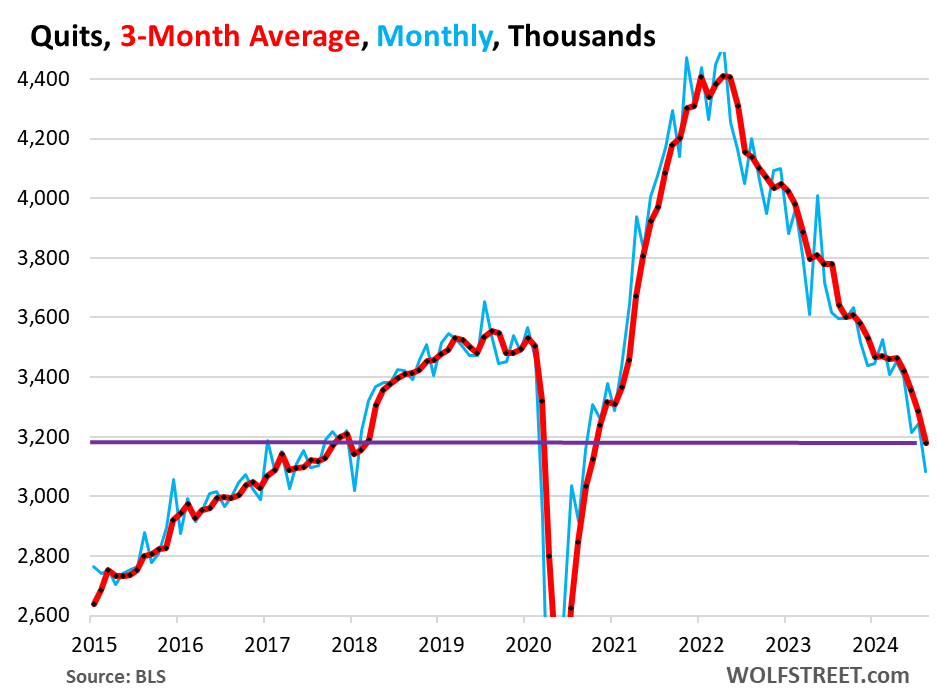The current labor market dynamics in the United States showcase an interesting shift, characterized by fewer voluntary quits among workers and a notable decline in job openings. Recent data reveals that the number of voluntarily quitting employees has reached the lowest level since early 2018, with just 3.08 million workers quitting in August. This trend is attributed partially to fears stemming from ongoing discussions about layoffs, which have historically been low, prompting many employees to remain in their current positions instead of risking a job switch. The reduced number of quits consequently leads to fewer vacant positions needing to be filled, resulting in a slowdown of hiring processes.
Employers are witnessing a transformation in the labor market where they are regaining control lost during the pandemic. As workers exhibit greater reluctance to change jobs, employers have fewer staffing gaps to address, which contributes to increased job stability. This dynamic has effectively mitigated the rampant wage increases witnessed during the height of the pandemic labor shortages. Many companies are now focusing on retaining talent, recognizing the challenges they faced when trying to rehire after previously laying off employees. This trend is further reinforced by a drop in the number of job openings, which, while still relatively high, hit a three-month average of 7.89 million – the lowest since March 2021.
Despite the stabilization of the labor market, some concerning indicators have emerged. The rate of new job creation has dramatically slowed, an unsettling trend evidenced by both current data and revisions from the previous month. In August, jobs created fell to 5.32 million, which, while being an increase from June’s figures, still represents a dip from July’s numbers. This deceleration in new job formation is particularly alarming given that the ratio of hires to nonfarm payrolls has declined to 3.4%, a level lower than during the pre-pandemic years typically associated with a tight labor market.
The backdrop of the labor market highlights the fluctuating job openings relative to the number of unemployed individuals seeking work. As of August, the ratio of job openings to unemployed people remained above one, signifying more available jobs than candidates looking for employment. However, this ratio has been decreasing compared to the hot labor market observed just before the pandemic, suggesting that the labor market is cooling down. The Federal Reserve’s deliberations regarding interest rates have been informed by these labor statistics, leading to policy discussions on maintaining a delicate balance to mitigate inflation without stifling economic growth.
Layoffs and discharges, meanwhile, have also decreased, sitting at just over 1% of nonfarm employment, pointing to an unprecedented commitment by employers to hold on to their existing workforce. This has prompted speculation on whether businesses have fundamentally shifted their outlook on employee retention, having learned costly lessons about talent acquisition in the aftermath of the pandemic. The historical lows in layoffs signal confidence from employers that retaining employees can lead to long-term productivity benefits.
In conclusion, the labor market is navigating a complex transition marked by reduced turnover, stable employment levels, and tempered job growth. Workers are less inclined to leave their jobs, leading employers to adjust their hiring practices accordingly. While the current statistics reflect a strengthening in job retention and lower layoff rates, the slowdown in job creation reflects broader economic uncertainties that may hinder future growth. Stakeholders in the job market must be vigilant in analyzing these trends to foster a forgiving yet dynamic employment landscape, ensuring that businesses can effectively respond to both current labor needs and future challenges.

